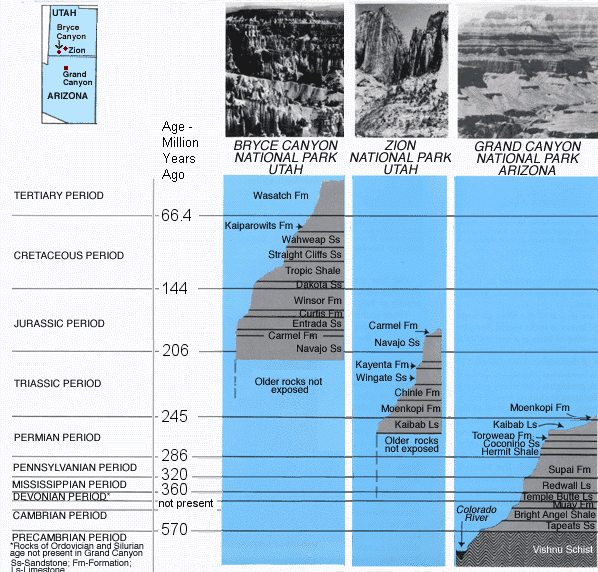
| The image above shows how the geologic formations
of the Grand Canyon form part of a larger complex that includes Zion and
Bryce Canyons to the north.
Although the Grand Canyon formations are, for the most part, millions of years older (shown in the image below) than those in either Zion or Bryce Canyons, they are now exposed because they were eroded by the Colorado River and its tributaries as the Kaibab Plateau began to uplift. |

| The image above shows the formations in the Grand
Canyon, those in Bryce and Zion Canyons to the North and their relative
ages. As illustrated in the first image, the formations that are
exposed in the Grand Canyon actually underlie those in the other canyon
formations. This region contains a fairly complete record of life
on earth as it evolved over hundreds of millions of years. It is
interesting to see how the environment in a relatively small area can
change back and forth from marine (with fossils of aquatic organisms) to
terrestrial (with fossils of land plants, and animals - which can
include footprints and burrows). The processes that formed these
layers and formations are interesting and complex, but good information
can be found online. I simplified the image to show only the
regions documented above, however these and related formations encompass
a larger area that include Colorado and New Mexico as shown
here. Some References: |